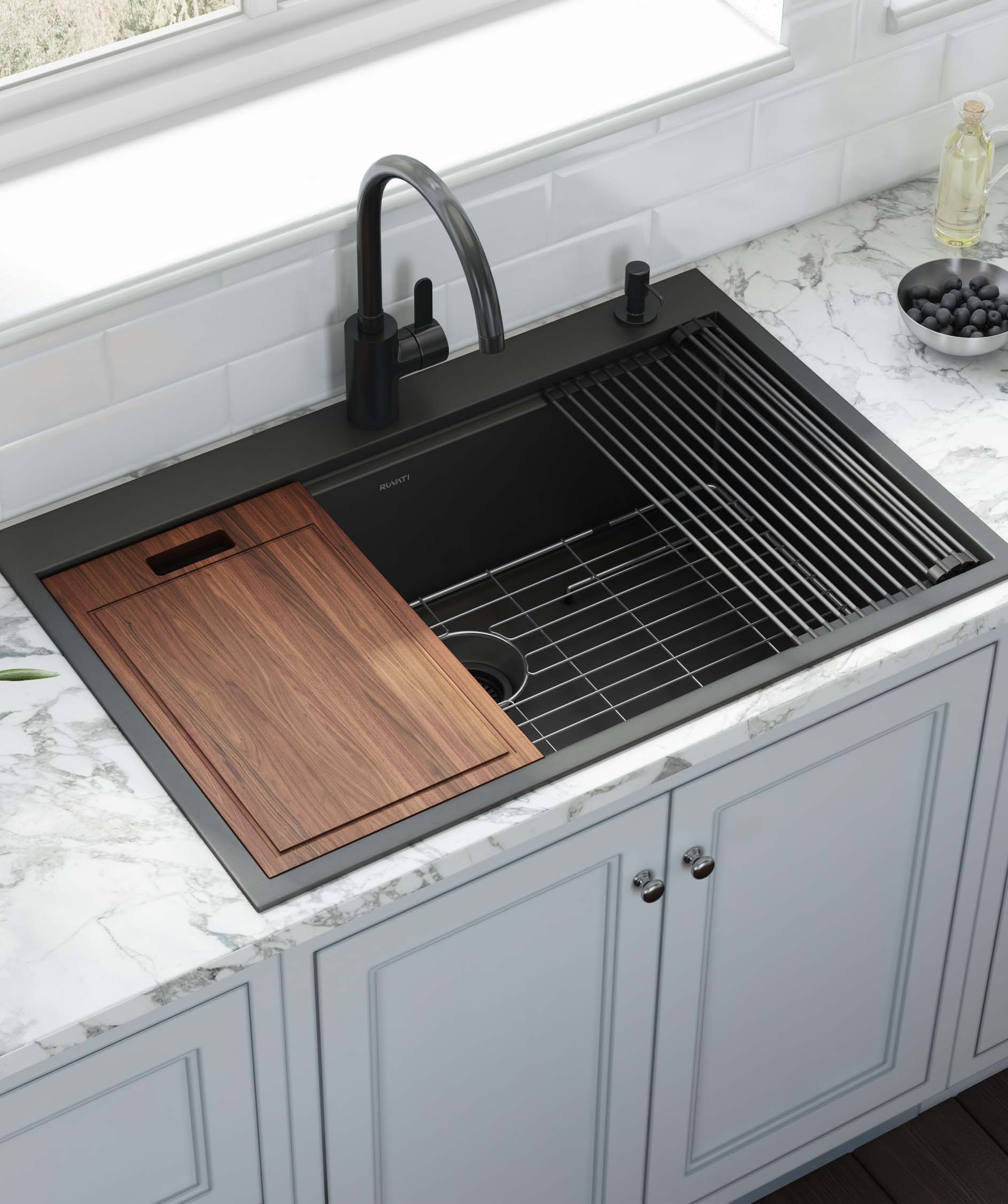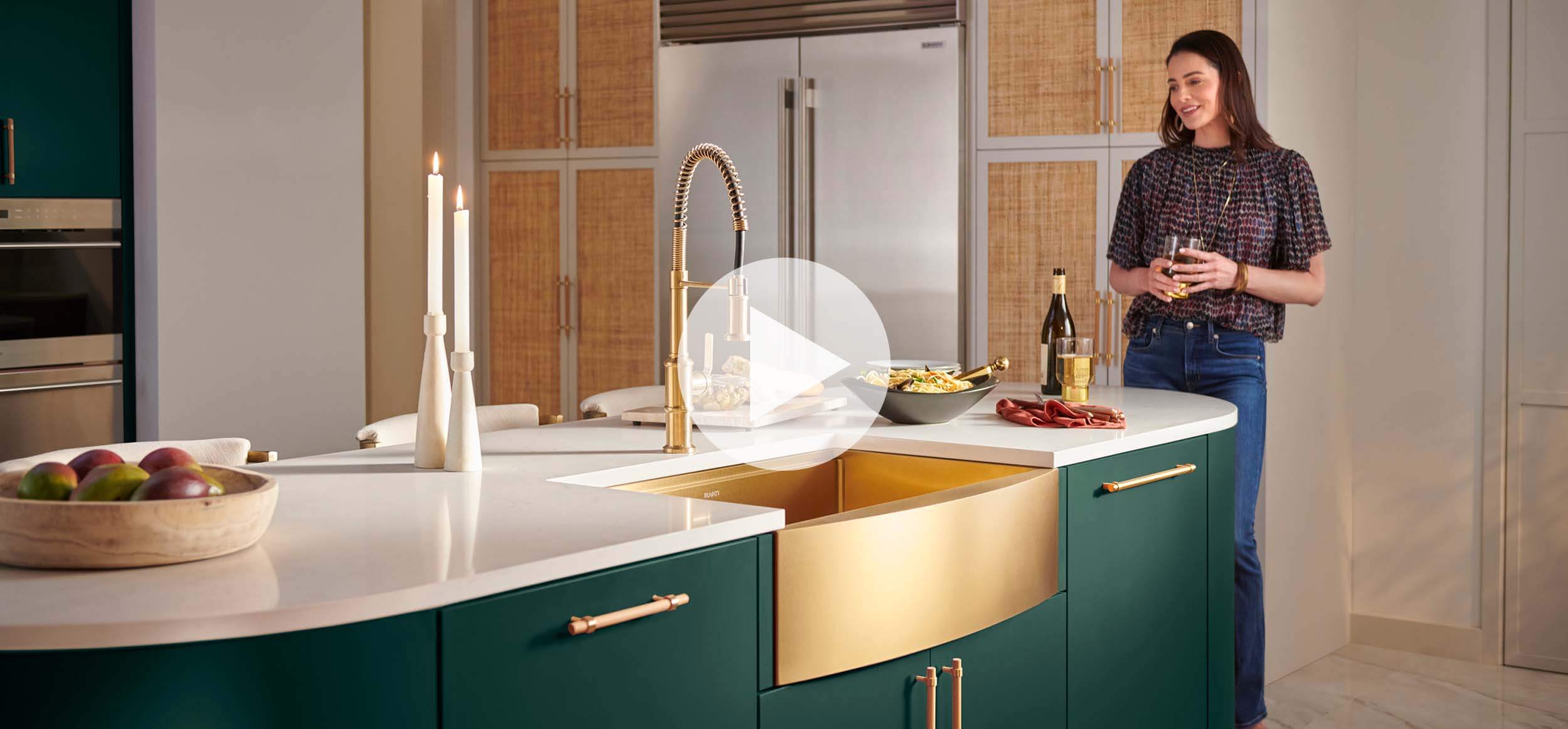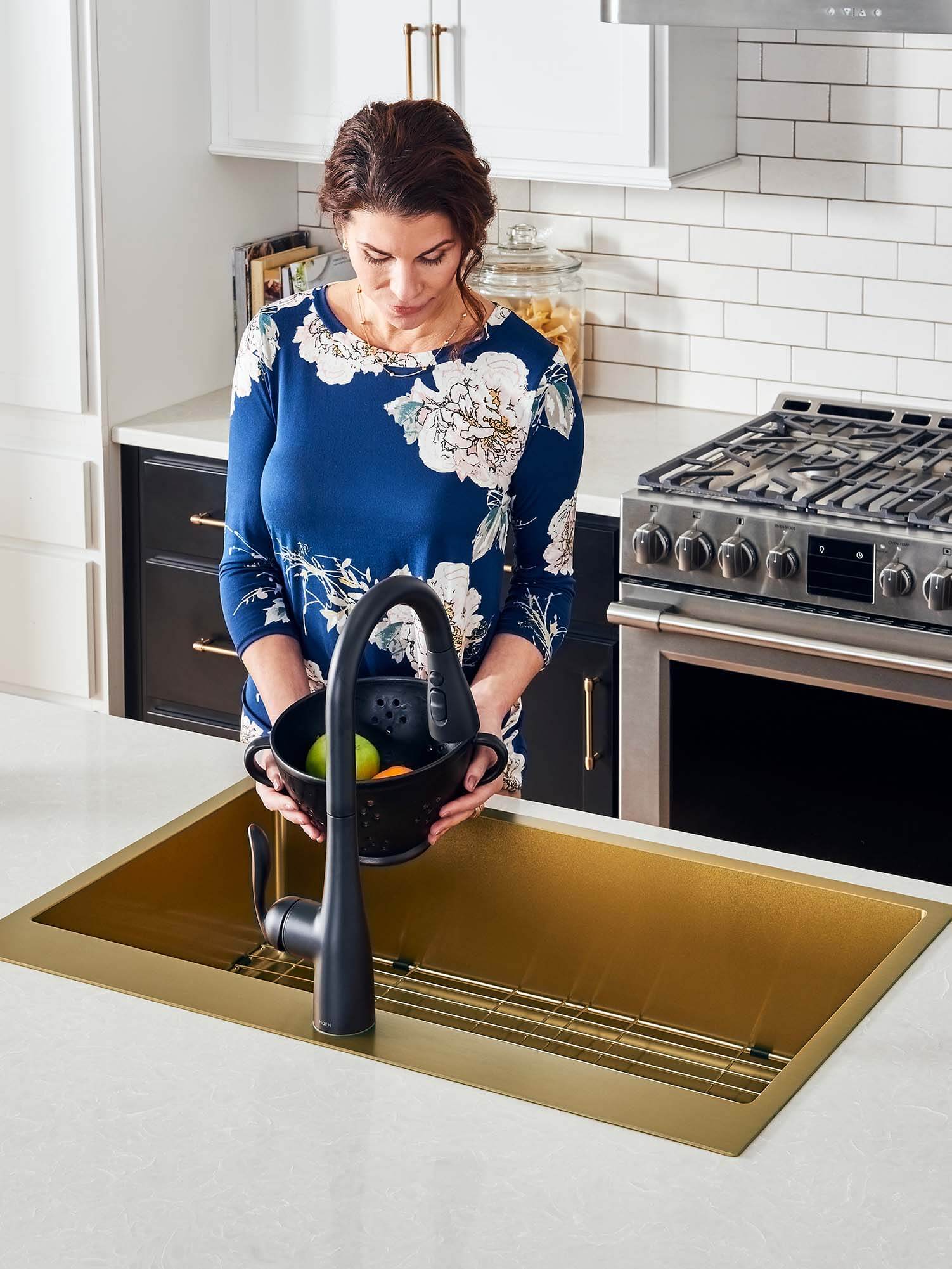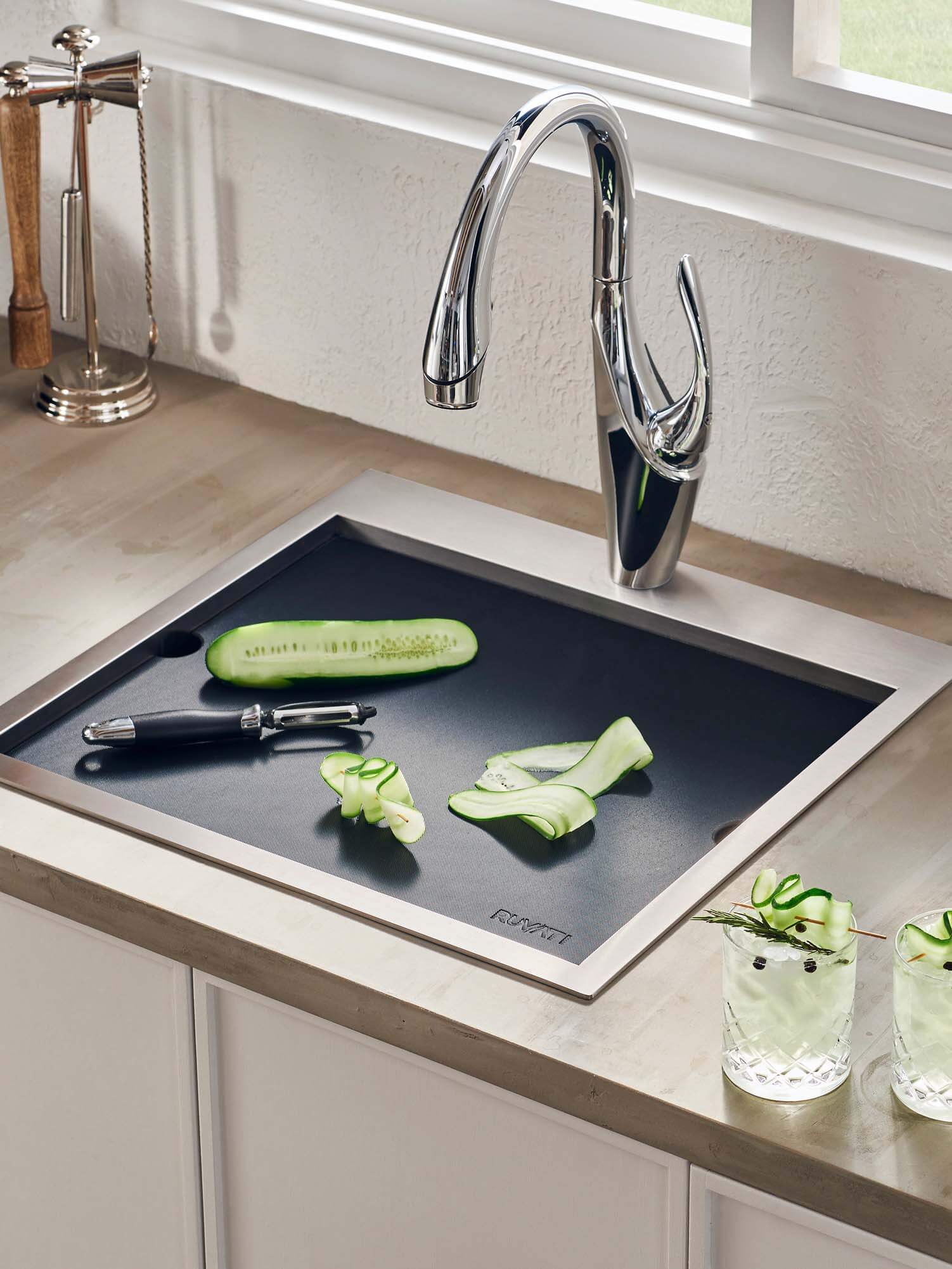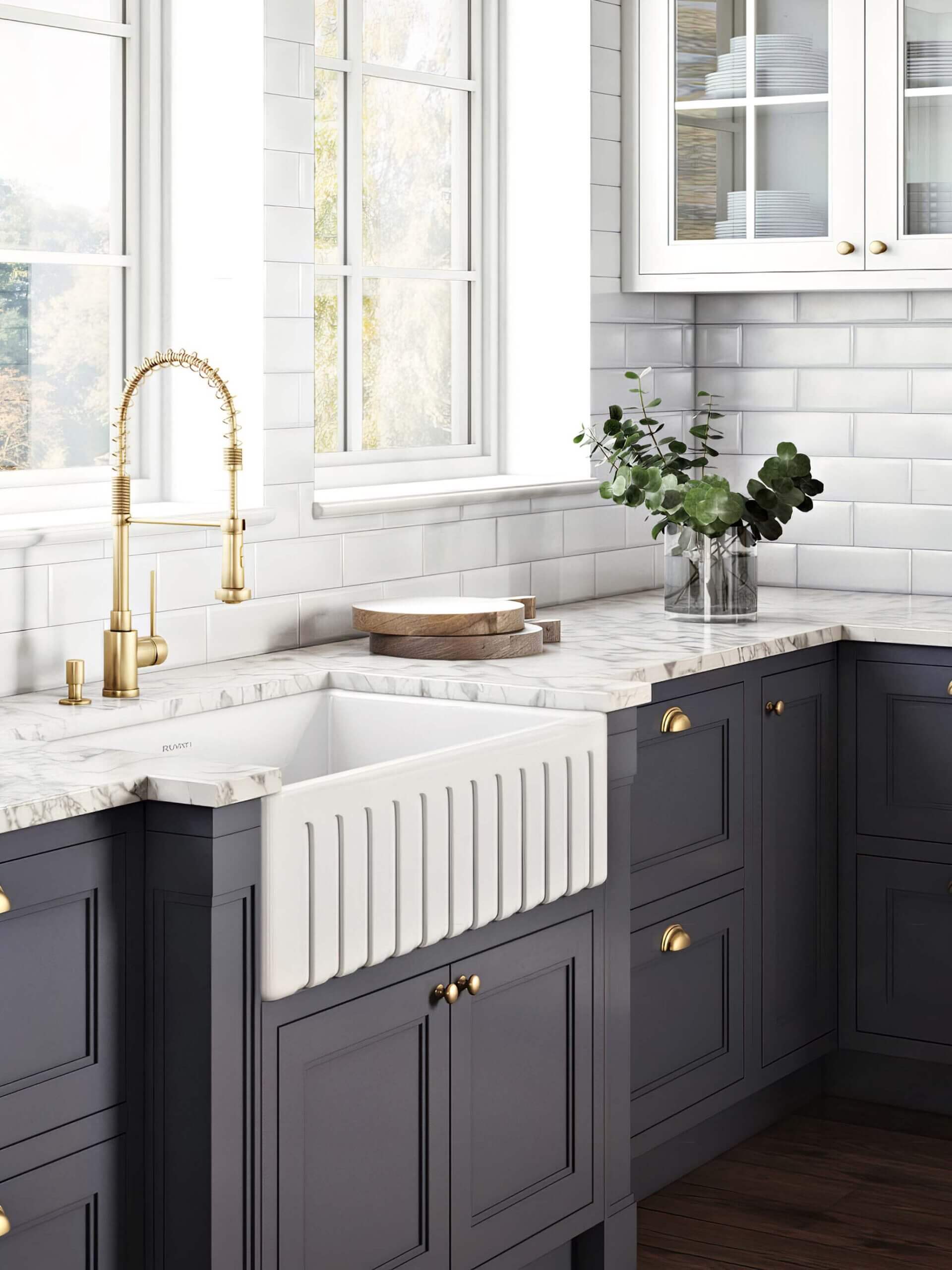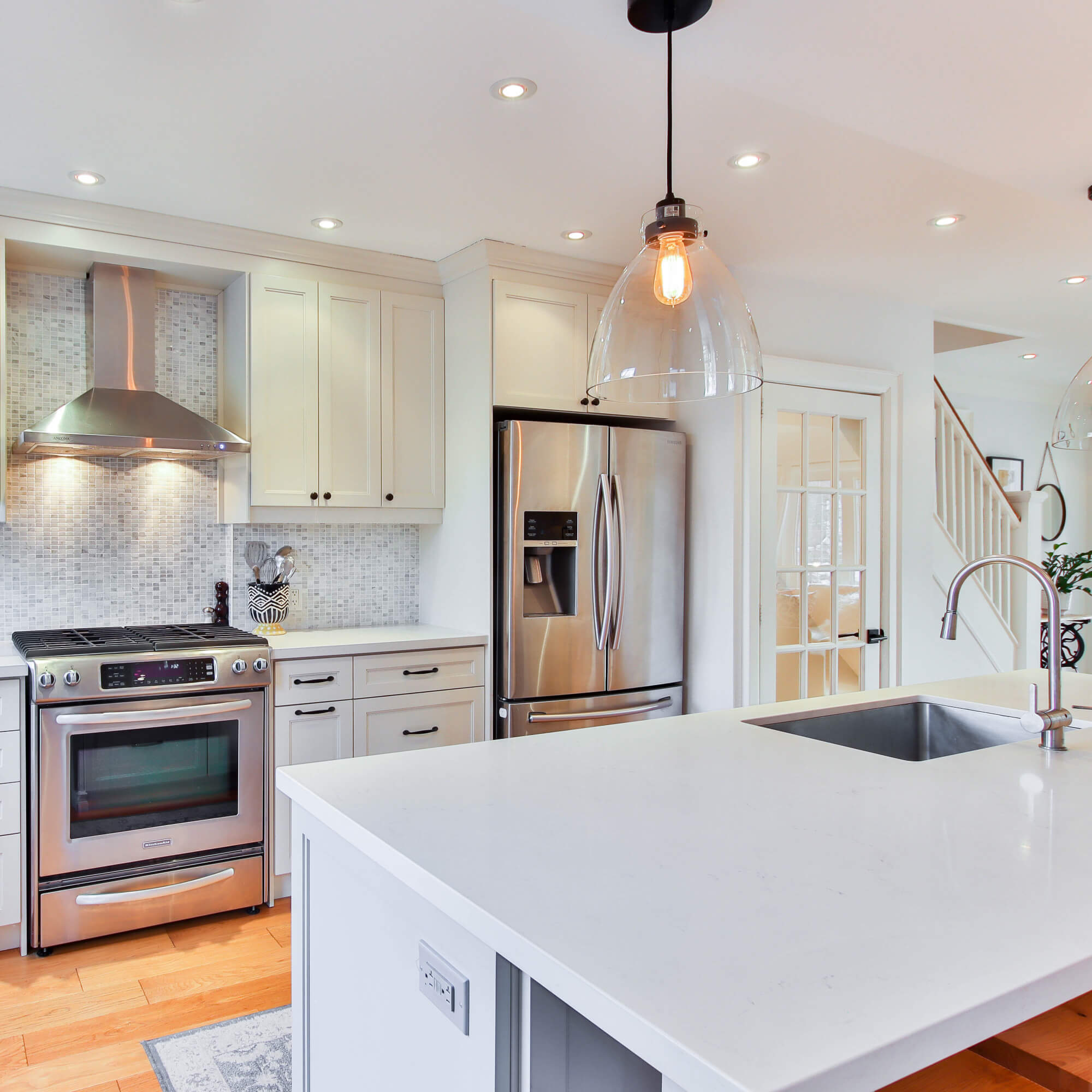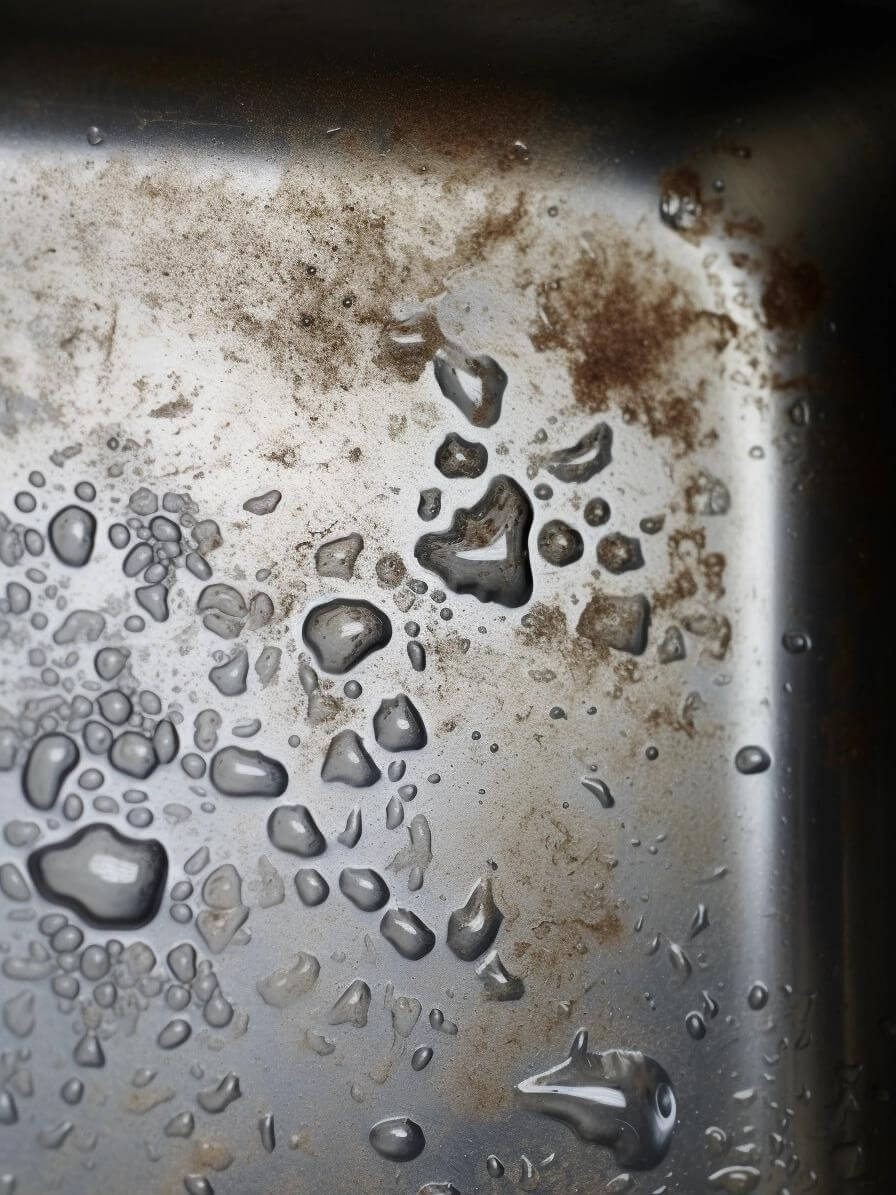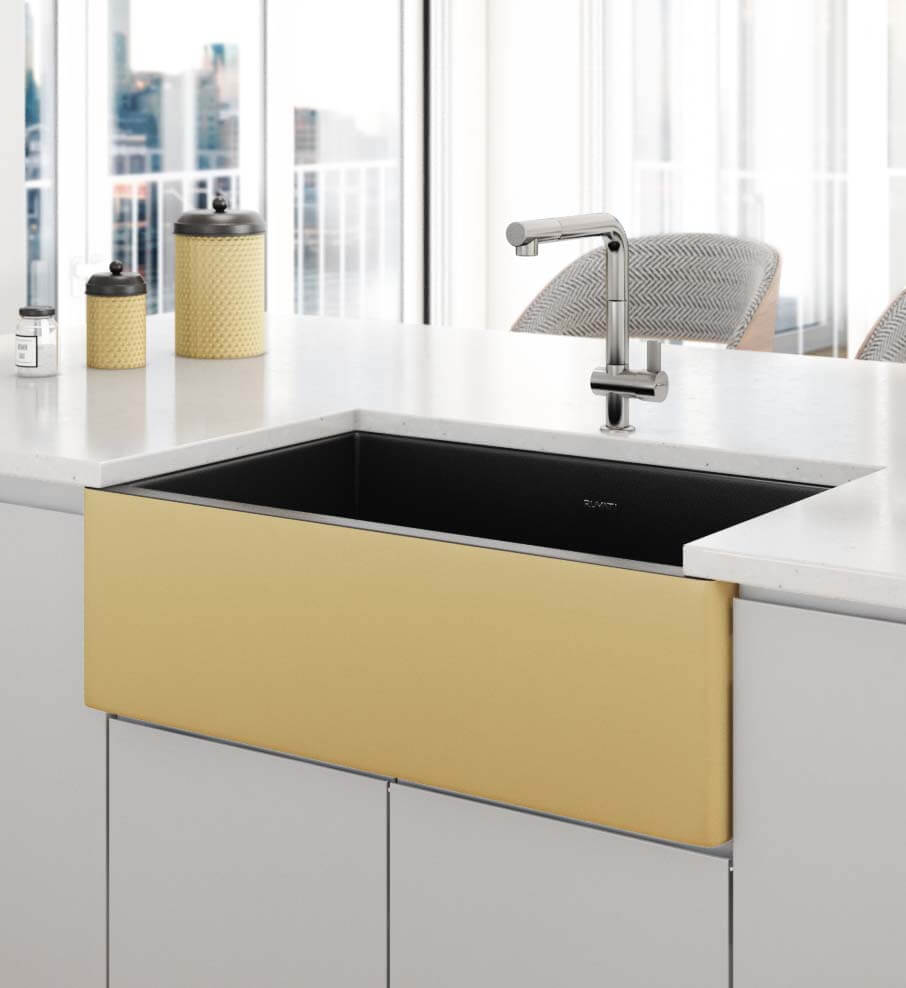When considering a coat, it is often thought of as a layer that rests atop something else, making it easily removable. For example, a clear polyurethane coating or paint protection film (PPF) is applied to a car’s finish. Altering the color is generally straightforward once you use heat and peel the film off, hence why it’s a coating. However, this notion does not accurately apply to PVD coatings. The PVD coating process is significantly more intricate than the term implies. It involves altering the material’s structure at a microscopic level to achieve its intended effects. It should be noted that PVD coatings, once applied, are irreversible without damaging the substrate or underlying material.
Over the years, Ruvati has developed an impressive list of colored stainless steel sinks using this process. From the original Terraza collection to adding color workstation sinks in the Monaco or Giana collection, we focus on making your kitchen colorful. You can now match your sink with your kitchen decor or appliances. This is accomplished using an innovative nano-PVD finish that is resistant to wear and abrasion and has a matte texture that is fingerprint and stain-resistant.
What is PVD (Physical Vapor Deposition) Coating?
PVD stands for Physical Vapor Deposition. It is a sophisticated technique to create highly durable thin coatings or films on various surfaces, including kitchen sinks. This process is analogous to painting, but it involves the deposition of metal or ceramic particles in the following steps:
Evaporation: In PVD, a target material (typically a metal or ceramic) is heated to a high temperature within a vacuum chamber using plasma gas. This controlled heating process causes the target material to transition from a solid state to a vapor phase without turning it into dust.
Ionization: As the target material vaporizes, some of its atoms or molecules become ionized, forming positively or negatively charged ions.
Sputtering: Simultaneously, these ions are accelerated towards the surface of the substrate material (such as a stainless steel kitchen sink) due to an electric field. This process is known as sputtering, where ions impact the substrate’s surface.
Bombardment Deposition: These high-energy ions collide with the sink’s surface, and they bond with it, forming a thin and durable target material layer. This deposited layer reinforces the underlying material.
Coating Properties: The resulting PVD-coated layer exhibits outstanding properties, including resistance to scratches, corrosion (such as rust), and the ability to change color based on the material used for deposition.
Simply put, the process happens in a massive vacuum chamber, so there’s no dust or dirt to mess up the coating. Unlike plating, the PVD process doesn’t need a lot of heat, so it’s safe for metal sinks. This thin layer, or coating, is light and more delicate than a strand of hair! But it’s tough and can protect your sink from getting worn out or scratched. It changes the color of the underlying material with many options of either metallic or matte finishes. This makes PVD an excellent choice for kitchen sinks, making them last longer and look better. Find more information on the process at ScienceDirect.
The History of Thin Film Coating Technology

Infographic created by Ruvati. Vist PVD for Decorative Applications for more historical facts related to thin film coating technology.
What is the Coating Process for Metal Sinks?
Today’s process for coating kitchen sinks with PVD (Physical Vapor Deposition) is quite sophisticated. This process involves carefully controlling how these particles arrange themselves at a microscopic level. Scientists study different combinations of materials, like tungsten carbide (WC) and titanium nitride (TiN), to find the best match with a good hardness and adhesion combination. Scientists are still researching ways to improve adhesion and increase wear resistance. They use high-tech methods to measure how strong these combinations are and how stable they remain over time. The goal is to create a coating that’s hard, resistant to scratches, and stays put without peeling off. This means your kitchen sink looks good and lasts long, even with daily use. A PVD sink can last well beyond a decade with the proper care and maintenance.
Common PVD Coating Mistakes to Avoid When Cleaning
Our unique technique makes the steel incredibly tough and resistant to wearing or peeling. Still, minor scratching of the sink’s surface can be difficult to avoid with everyday use. Fortunately, these marks are usually only superficial and will become less visible over time. In addition, our included bottom rinse grids will also assist in protecting the sink surface. To keep your sink looking brand new, be sure to follow these simple tips:
Always use the included bottom rinse grid. This will ensure water flows freely and the bottom stays dry.
Never leave a wet towel or sponge sitting directly on the bottom of the sink.
Never leave cast-iron pots and pans sitting inside the sink. These release a lot of rust particles that can bind to the surface of the sink. Wash them promptly and rinse off the sink thoroughly with soap and water.
Clean your sink regularly. Dirt and food particles sitting on the sink surface for days can harbor germs and damage the sink finish. Rinse off the sink with water regularly after use. Every few days, scrub the sink gently with soap and non-scratch dish sponge and rinse thoroughly with water. This will keep your sink finish looking like new.
Clean with a mild dish soap and water. Use a soft foam sponge or a microfiber towel.
Avoid all abrasive scrubbing pads such as Scotch-Brite.
Avoid all abrasive cleaning agents (“SoftScrub”, “Barkeepers Friend“).
Avoid ammoniated products (window cleaner, tile cleaners, etc.).
Avoid bleach.
For hard water stains, you can use vinegar mixed with water (50:50). Let soak for up to 30 minutes and then rinse off well with water. Don’t let the vinegar sit on the sink for longer than 30 minutes.

